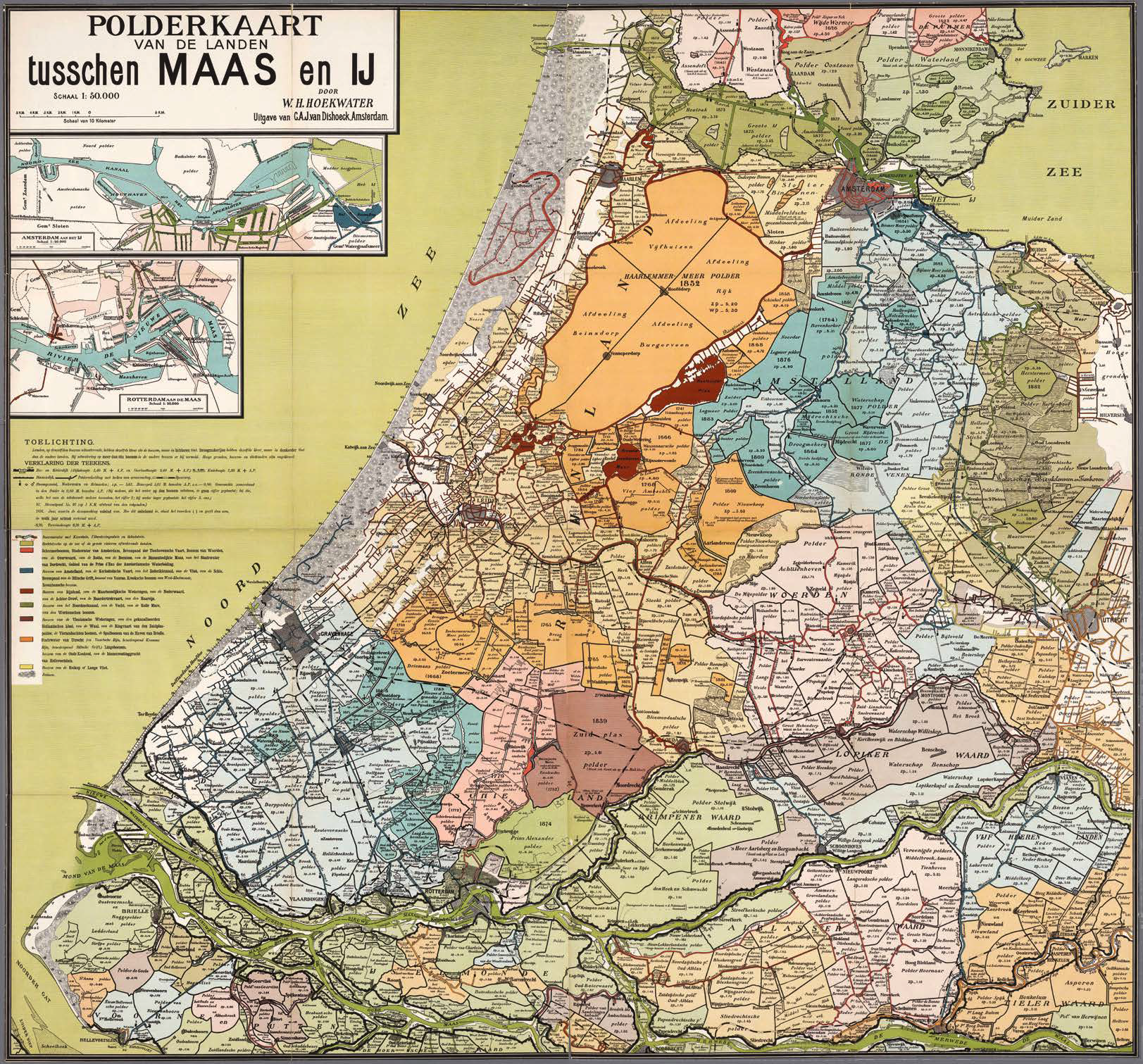A survey in maps: 1575, 1680, 1900 and 2015
Downloads
Abstract
In 1901, the Polderkaart van de landen tusschen Maas en IJ (Polder map of the lands between Maas and IJ) appeared in print. This large coloured wall map was the work of W.H.Hoekwater of Charlois, a teacher by profession.The map had an educational purpose: Hoekwater wanted to show just what a ‘singular country’ this low-lying area of the Netherlands was, built and maintained through the ‘sheer willpower and genius of earlier and current inhabitants’. His explanatory notes consist of a brief technical introduction and, most notably, a summary and description of the storage drainage systems and associated hydraulic engineering works, with tables showing the different water levels. Hoekwater had two versions of his explanatory notes printed, one for municipal, polder and water boardadministrators and one for school children.
Hoekwater’s map showed the hydraulic engineering works in the area between the rivers Maas and IJ, and how those entities discharged into the waters outside the dyke system. Hoekwater had drawn the map on his own initiative, without having been commissioned to do so by a district water board or any other organisation. Since the sixteenth century, large wall maps of various water board districts had been made at the behest of dyke and polder boards. Those older maps show the territory of the relevant water board complete with watercourses and the main ngineering works under its control. None of those maps transcends the level of scale of a single water board district. But it is not just its scale that makes Hoekwater’s unique. Hoekwater depicts the entire water system and its operation in an innovative way, using colour schemes to enable viewers to follow the flow of water.
Erratum
Rowin van Lanen is erroneously not listed as author of 'Water system and city form in Holland'.
Note 1 on page 47 should read: This research was a collaboration between the Cultural Heritage Agency and the Faculty of Architecture at Delft University of Technology. The texts were written by Jaap Evert Abrahamse, Menne Kosian and Reinout Rutte; they serve as explanatory notes to the maps, which were compiled by Otto Diesfeldt and Iskandar Pané on the basis of a historical GIS created by Menne Kosian and Rowin van Lanen, and expanded under the supervision of Yvonne van Mil by Thomas van den Brink and Arnoud de Waaier. The writing of this text would not have been possible without the cooperation of Guus J. Borger, who provided critical comments on an earlier version, of which grateful use was made.
How to Cite
Published
Issue
Section
License
Copyright (c) 2021 Jaap Evert Abrahamse, Menne Kosian, Reinout Rutte, Otto Diesfeldt, Iskandar Pané, Yvonne van Mil, Thomas van den Brink, Arnoud de Waaijer

This work is licensed under a Creative Commons Attribution 4.0 International License.




